Results 1 to 9 of 9
 19Likes
19Likes
Thread: M M Taylor Near Wedge
-
09-15-2018, 09:08 PM #1Senior Member


- Join Date
- Feb 2018
- Location
- Manotick, Ontario, Canada
- Posts
- 2,817
Thanked: 563 M M Taylor Near Wedge
M M Taylor Near Wedge
Picked this up at an antique store for $25 CAD. It was very badly rusted,but as someone said, you can always restore a wedge and this one was pretty hefty.
I forgot to take before pics, so what you see is what I now have.
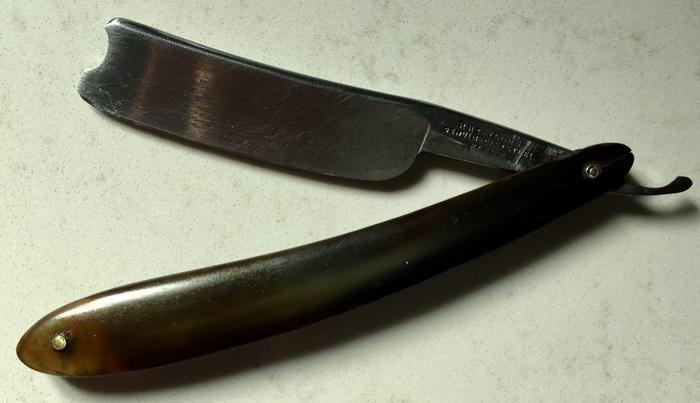
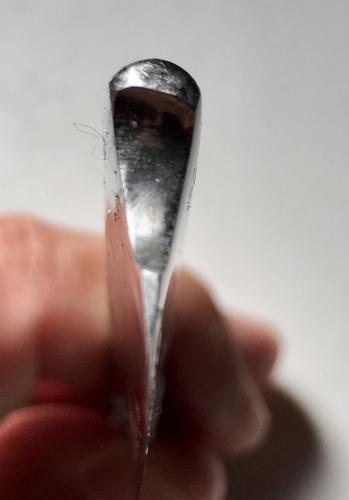
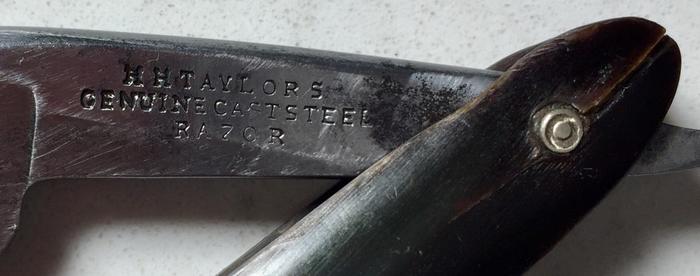
I unpinned the horn scales, stabilized the crack near the pin with super glue, gave it a quick sanding with a 1500 grit pad and let it sit in Neatsfoot oil overnight.
I started with 400 grit, went to 600 grit, but didn’t seem to be making much progress with the pitting, so went to 220 grit with my random orbital sander - maybe that was a mistake, because there are lots of remaining scratches. I just wanted to get rid of the black stuff and it mostly worked. Then I used green greaseless compound on a small felt wheel with my Dremel followed by automotive rubbing compound and MAAS.
It’s shiny, but there are still lots of scratches and some stubborn superficial pitting. Any advice on what to do next would be greatly appreciated.

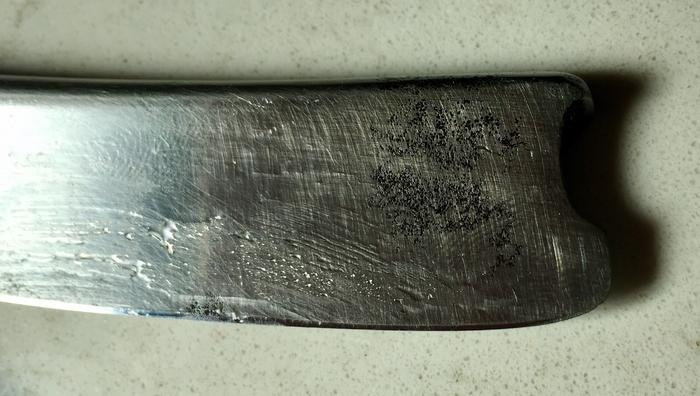
I honed it this morning because I wanted to get a test shave in to motivate myself to do some more work on how the blade looks. Shapton 1000 => Norton 4000/8000 => Vermio with 1 piece of electrical tape on the spine. Got a very nice 2-pass shave.David
“Shared sorrow is lessened, shared joy is increased”
― Spider Robinson, Callahan's Crosstime Saloon
-
09-15-2018, 09:27 PM #2Senior Member


- Join Date
- Jun 2013
- Location
- Pompano Beach, FL
- Posts
- 4,048
Thanked: 636
Personally if it shaves well I would leave it. The pitting near the toe is too deep to remove without making the blade too thin.
-
09-15-2018, 09:39 PM #3Senior Member




- Join Date
- Feb 2013
- Location
- Haida Gwaii, British Columbia, Canada
- Posts
- 14,457
Thanked: 4830
I would use a hard backer and star hand sanding at 400 and then 600 with WD-40 on up to 2000. I like corks as a backer. I do lengthwise until I cant see the previous scratches and then go perpendicular until the scratches are all in the same direction and then move up. The dark in the pitting will come out with 0000 steel wool and polish or WD-40 but it takes a lot of elbow grease, so be prepared. I would just hand sand it until the scratches from the 220 are gone and not worry about chasing the pitting.
It's not what you know, it's who you take fishing!
-
-
09-16-2018, 02:43 AM #4

Just FYI the maker is HH Taylor (not MM) if you are looking to research it.
-
09-16-2018, 04:22 AM #5
-
The Following User Says Thank You to sharptonn For This Useful Post:
DZEC (09-16-2018)
-
09-16-2018, 09:58 AM #6

There's loads of Taylors in the Sheffield directories. This one could be him ?
TAYLOR, Henry Holbert (Qualifying property, Warehouse and Office, 23 & 25 Paradise Street).
Address: Bar Cottage, Owlerton, Sheffield in 1864-65.
Recorded in: Sheffield Burgess Rolls.
Taylor, Henry Holbert (, Manufacturer).
Address: Normandale House. Loxley, in 1871.
Recorded in: Whites Sheffield & District Directory - 1871.
TAYLOR, Henry Holbert (Qualifying property, Warehouse, Paradise Street).
Address: ~, Saint Peters in 1875-76.
Recorded in: Sheffield Burgess Rolls.Regards Brian
-
The Following User Says Thank You to 782sirbrian For This Useful Post:
DZEC (09-16-2018)
-
09-16-2018, 11:30 AM #7Senior Member


- Join Date
- Feb 2018
- Location
- Manotick, Ontario, Canada
- Posts
- 2,817
Thanked: 563
-
09-16-2018, 02:55 PM #8

Henry Holbert Taylor most likely as Brian said. He's in Tweedale, as getting a start in the 1840s. H.H. died in 1879 with the works taken over by his sons. So that should give a window for the age of it.
-
09-16-2018, 06:56 PM #9Senior Member


- Join Date
- Feb 2018
- Location
- Manotick, Ontario, Canada
- Posts
- 2,817
Thanked: 563
Got to work on the HH Taylor (a nod to Scienceguy) following RezDog’s suggestions (thanks Shaun).
Started with medium grit Emory cloth and WD40 followed by fine Emory cloth and WD40 followed by 0000 steel wool with WD40. That got rid of pretty much all of the black in the remaining pits and a good deal of the scratches I put on yesterday. I then continued with wet/dry sandpaper - 1000 -> 1500 -> 2000 -> 3000. All the sanding was done by hand using a wine cork or a white eraser.
Here are pics of the results. The pits are still there, but they are quite shallow and the black is gone. There is some pitting close to the edge that is a bit of a concern.
There are still some scratches, but I can live with that and I can now see the maker’s stamp says H H Taylor.
Of course all the sanding toasted the edge. Back to the stones.
Given the shave I had with the blade yesterday, I believe it can be an everyday shaver.
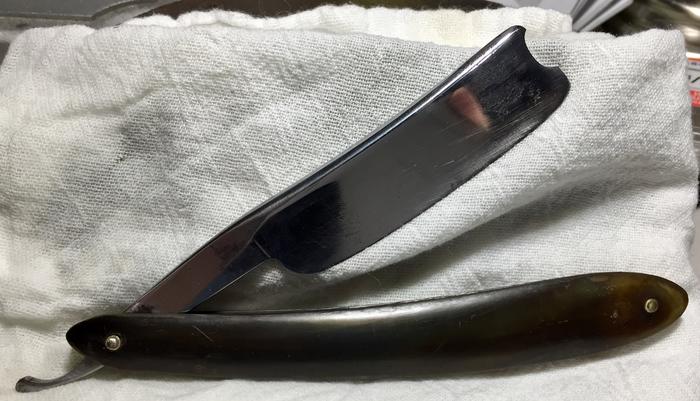

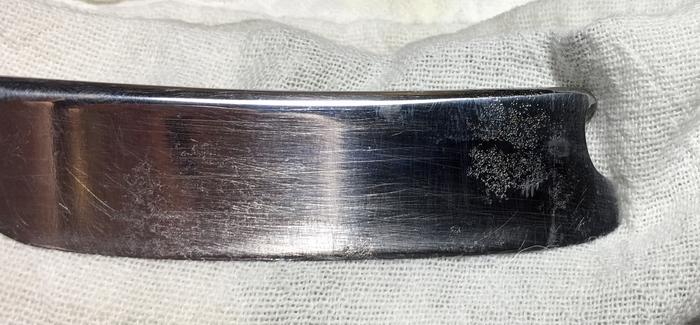
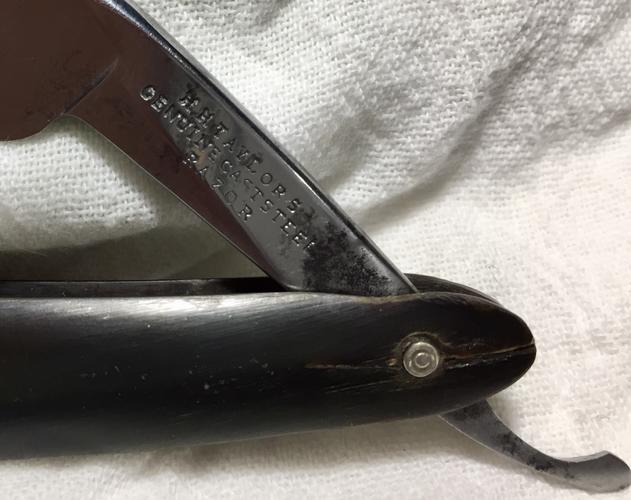 David
David
“Shared sorrow is lessened, shared joy is increased”
― Spider Robinson, Callahan's Crosstime Saloon



 LinkBack URL
LinkBack URL About LinkBacks
About LinkBacks






 Reply With Quote
Reply With Quote

